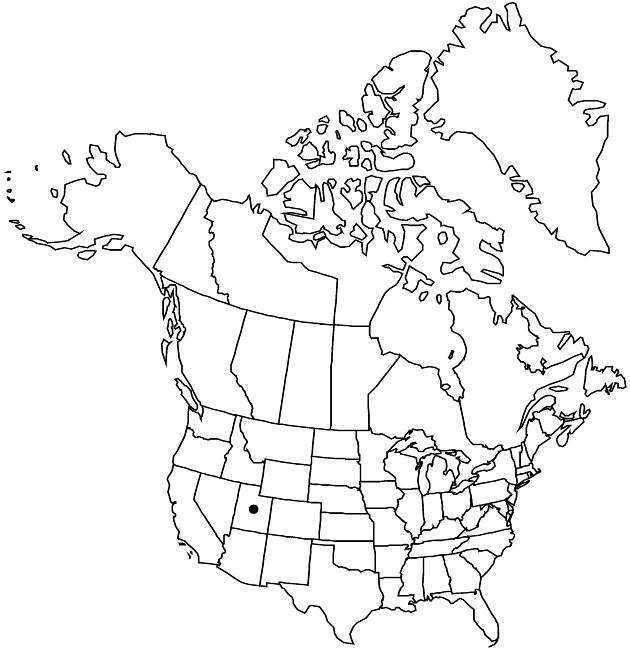Herrickia kingii
Sida 21: 898. 2004.
Perennials, densely cespitose, dwarf, 1–12 cm; caudices woody, branched, from stout taproots. Stems 1–5+, loosely erect, densely long-stipitate-glandular. Leaves mostly basal and cauline, basal and proximal cauline tufted, often marcescent; petiolate to sessile (distal), petioles 10–32 mm, bases sheathing; blades oblanceolate to spatulate, 10–80(–120) × 15(–20) mm, progressively reduced distally, thick, firm, bases ± attenuate, margins entire or irregularly serrate, eciliate, teeth apiculate to ± spinulose, apices obtuse to acute, mucronate-indurate or callous, faces glabrous. Heads 1–5, borne singly or in ± corymbiform arrays. Peduncles stipitate-glandular [bracts not observed]. Involucres hemispheric-campanulate, 8–12 mm. Phyllaries in 4–5 series, often partly purplish (especially inner), ± keeled, lanceolate to linear-lanceolate, margins narrowly scarious, erose, sometimes stipitate-glandular (particularly on green parts), green zones 1/2–2/3 distal portions and full width (outer) to less than 1/6 and along midveins (inner), apices acute to long-acuminate, squarrose (outer and mid) to appressed (inner), faces glabrous, stipitate-glandular (green parts). Ray florets 13–27; corollas white to lavender, 8–17(–20) × 1.7–2.2(–3) mm. Disc florets 29–47; corollas pale yellow, 5.5–(6–8) mm, barely ampliate, tubes 2.6–2.9 mm, slightly longer than funnelform throats 1.9–2.3 mm, lobes erect to spreading, lanceolate, 0.8–1 mm. Cypselae brown, fusiform, slightly compressed, 2.5–3.5 mm, 8–10-nerved, faces ± densely strigillose; pappi of yellowish bristles ca. 6 mm.
Discussion
Varieties 2 (2 in the flora).
Herrickia kingii is known only from the Wasatch and Canyon mountains. The generic assignment of this species has been debated (e.g., A. Cronquist and D. D. Keck 1957; G. L. Nesom 1991e; Cronquist 1994). S. L. Welsh et al. (1987) underlined similarities with “Aster” alpigenus (= Oreostemma alpigena), among others. A recent molecular phylogenetic analysis (L. Brouillet et al. 2004) showed that H. kingii belongs to the Eurybia complex, possibly as a basal member of Herrickia.
Selected References
None.
Key
| 1 | Leaves entire | Herrickia kingii var. kingii |
| 1 | Leaves (at least some basal and proximal) irregularly serrate | Herrickia kingii var. barnebyana |
